Andrographis paniculata (Burm. f.) Wall. ex Nees
| Etymology | Genus | From Greek, Andro=male, graphis=pen, referring to the male extension of the flower |
|---|---|---|
| Species | After panicule, the structure of the inflorescence | |
| Family | Acanthaceae | |
| Synonyms | Justicia paniculata Burm. f. | |
| Common Names | King of Bitter, 穿心蓮, Creat, Green Chiretta | |
| Status | Exotic: Naturalised | |
| Form | Herb | |
| Native Distribution | India, Sri Lanka | |
Diagnostics:
Andrographis paniculata is a common weed and cultivated privately for traditional medicinal consumption. The leaves are glossy and hairless, sometimes wrinkled, and parts of the blade can have a purple colouration. The flower has a distinct corolla (petal) tube, which sticks out like a nose and supports the stamen.
Interesting Facts:
The King of Bitters is known for its intense bitterness, primarily due to its high concentration of andrographolide, which is thought to act as a deterrent for herbivores. This is the main bioactive compound found in the plant and is mainly concentrated in the leaves (Tan et al., 2017).
It is well-known in traditional Chinese medicine and Ayurveda, and is commonly used to treat flu, upper respiratory tract infections, and sore throats. It has also been described as having anti-inflammatory, antiviral, antithrombotic, hepatoprotective and anticancer properties (Tan et al., 2017). Andrographolide is also said to have potential neuroprotective effects as it can cross the blood brain barrier (Lu et al., 2019)
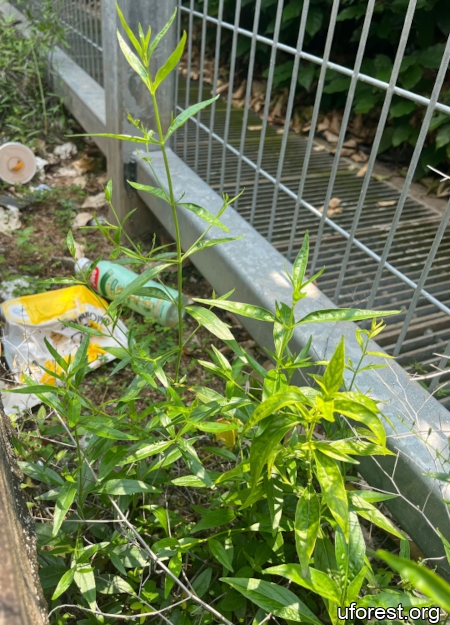
Growing as a weed along the pavement.
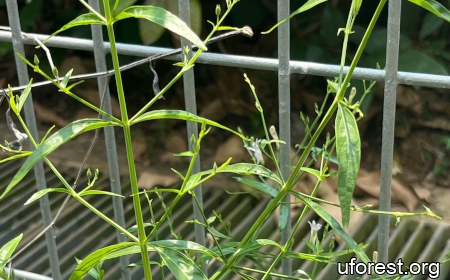
45 degree angle of flowering branch.
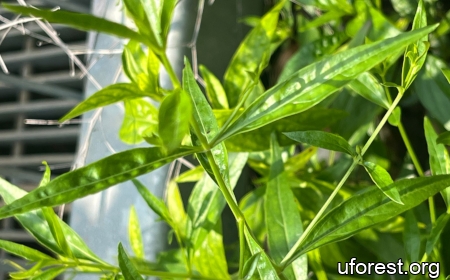
Glossy and winkled leaves.
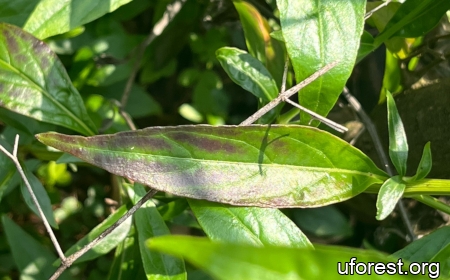
Occasional purple colouration.
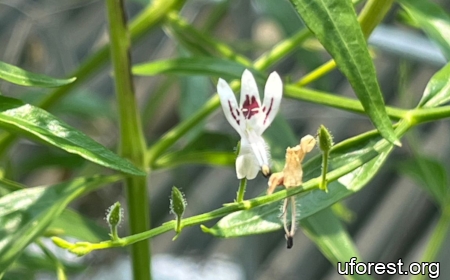
Flower.
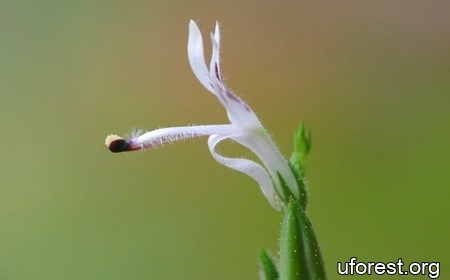
Side view of flower, showing the corolla tube.
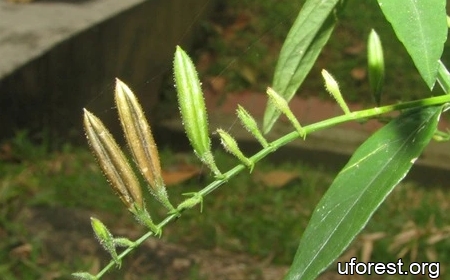
Dehiscent Fruits.
References
Tan WSD, Liao W, Zhou S, Wong WSF (2017) Is there a future for andrographolide to be an anti-inflammatory drug? Deciphering its major mechanisms of action. Biochemical Pharmacology, 139(1): 71-81.
Lu J, Ma Y, Wu J, Huang H, Wang X, Chen Z, Chen J, He H, Huang C (2019) A review for the neuroprotective effects of andrographolide in the central nervous system panel. Biomedicine & Pharmacotherapy, 117.
Author: Siyang
Posted: 2025-08-24